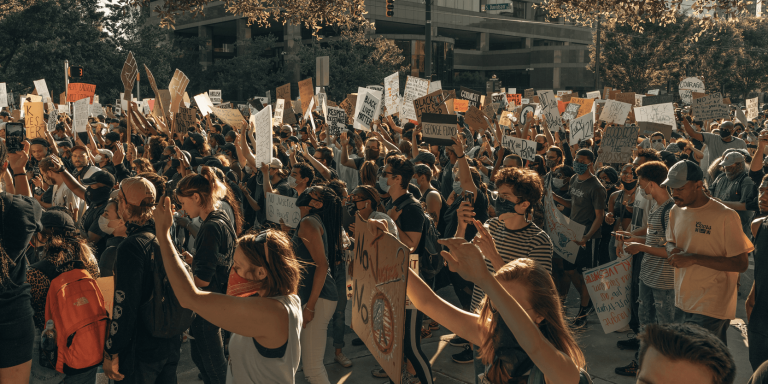
Facial recognition systems raise questions about data protection issues and the risks of infringing on personal freedoms, and many NGOs, such as Amnesty International, are calling for an end to their use. In late July, New York Supreme Court Justice Laurence Love ruled in favor of Amnesty International and the Surveillance Technology Oversight Project (STOP) and ordered the New York City Police Department (NYPD) to disclose thousands of records of how it obtained and used facial recognition technologies against Black Lives Matter protesters between March and September 2020.
If there is one AI technology that is causing debate and concern, it is facial recognition. While China uses it to repress journalists, foreign students, the Uyghur community, and “people of concern,” Europe is trying to regulate its use in public spaces via the GDPR. At the global level, most police services use it and more and more cities are installing smart cameras.
Facial recognition technologies can be developed by retrieving millions of pictures from social network profiles and driver’s licenses, without the consent of the persons concerned. The software then performs a facial analysis of the images captured by CCTV and other video surveillance systems to look for possible matches with the database of recovered images. These are likely to amplify racial discrimination, threaten the right to privacy and the right to peaceful protest.
Some U.S. cities, such as Boston, Portland and San Francisco, have banned the use of this technology by law enforcement, while the New York City Police Department (NYPD) continues to use it, particularly during Black Lives Matterprotests.
Tens of thousands of cameras are installed in predominantly black and Latin American neighborhoods such as Brooklyn, Harlem in Manhattan or the Bronx.
Matt Mahmoudi, a researcher on artificial intelligence and human rights at Amnesty International, states:
“Police can use this sprawling network of cameras for intrusive facial recognition, potentially turning New York into a surveillance city worthy of an Orwellian novel…. You are never anonymous. Whether you’re participating in a protest, walking to a specific neighborhood, or just going to the grocery store, your face can be tracked through facial recognition, which relies on footage from thousands of cameras scattered throughout New York City.”
The Black Lives Matter movement
Black Lives Matter is a political movement born in 2013 created by the African-American community after the acquittal of the man who killed 17-year-old Trayvon Martin. It campaigns against police violence and systemic racism against black people in the United States. The death of Eric Gartner, following a suffocation during his immobilization by the police force, had given him momentum.
The death of George Floyd in Minneapolis, on May 25, 2020, in similar circumstances, filmed and relayed by social networks, was the cause of international protests.
Amnesty International and STOP’s legal action against the NYPD
Beginning in September 2020, Amnesty International USA filed a public records request under New York’s Freedom of Information Law (FOIL) to obtain NYPD documents related to surveillance of the historic Black Lives Matter protests in 2020.
The NYPD denied the request, and later appealed. In July 2021, Amnesty International and S.T.O.P., a privacy and civil rights organization, filed a lawsuit against the NYPD for its refusal to release its records.
On July 29, Supreme Court Justice Laurence Love ordered the NYPD to turn over 2,700 documents and emails from March1 to September1, 2020, related to the acquisition and use of facial recognition surveillance at Black Lives Matter protests, after resubmitting Amnesty’s original Freedom of Information Act (FOIL) request.
This will allow Amnesty International and STOP to thoroughly investigate the NYPD’s acquisition and use of facial recognition technologies throughout the city.
Matt Mahmoudi states:
“New Yorkers demanding racial justice have a right to know the full details of the NYPD’s use of facial recognition technologies during the Black Lives Matter
protests. This ruling recognizes that the NYPD broke the law by withholding information and is an important step in holding them accountable for their use of discriminatory surveillance. That it took a lawsuit to achieve this is a damning indictment of the NYPD’s lack of transparency and accountability to the public.”
He adds:
“Banning facial recognition for mass surveillance purposes is a much-needed first step in addressing racist policing in New York City. We all have the right to demonstrate peacefully without fear of surveillance.”
Albert Fox Cahn, Executive Director of the STOP Project, concludes:
“The NYPD was wrong to surveil Black Lives Matter protesters and wrong to hide evidence… They systematically conceal the means they use to monitor us, but now it’s over. This ruling is clear: the NYPD broke the law by hiding its records. When police act in the shadows and violate surveillance laws, it is a threat to public safety, but also to democracy. I hope that New York City Mayor Eric Adams’ police force will quickly comply with this order. The people of New York City deserve to know how political dissent is controlled in this city. More importantly, these records can help us prevent future abuses.”
Translated from Reconnaissance faciale : La Cour suprême de l’État de New York statue en faveur d’Amnesty International et du projet STOP









